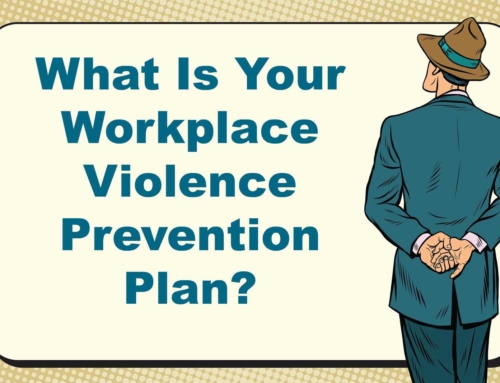This article gives ten ways to increase workplace safety through workplace violence employee training. Fiore Group Training is a recognized leader in improving workplace environments with effective harassment prevention training and workplace violence prevention training. For more information about how to get started with workplace safety training, please contact us.
If you were to take a guess, what industry do you think takes the lion’s share of Workplace Violence incidents?
The ironic answer, is that it’s an industry created to keep people healthy.
I’m talking about healthcare.
Unfortunately, much has been written on the problem of Workplace Violence in the healthcare industry.
And much continues to be written about it.
The numbers tell us that a huge number of violent altercations occur, but statistically, it’s also reported that the healthcare industry does an incredible job at tracking those incidents.
However, not ALL incidents get reported, so no one really knows exactly how bad the problem is.
The trouble seems to be that tracking incidents doesn’t mean they will be stopped.
In Ontario, a provincial group supported by the provincial government was created a few years ago to examine the issue. Their mandate is to examine ways to prevent violence against nurses in hospitals before moving on to other areas of the healthcare sector.
Since Ontario is making efforts to rectify the situation, I wanted to take this opportunity to share the types of violence that healthcare staff deal with on a daily basis. This is based on the four recognized and accepted sources of violence as represented in the scope of Workplace Violence.
Four Types of Workplace Violence
Type 1: External/Intrusive/Stranger Violence:
- Criminal intent by strangers
- Sabotage, mischief
- Protest violence
- Mental illness or drug-related aggression
- Random violence
Type 2: Consumer/Client Related Violence:
- Consumers / Clients / Patients (& their families) violence towards staff
- Vicarious trauma to staff
Type 3: Staff-Related Violence:
- Staff versus staff
- Aggressive bullying and intimidation
Type 4: Relationship Violence:
- Domestic violence
- Sexual harassment
Something to note: Third party violence has also been identified and is an aspect of Workplace Violence that needs to be addressed. It occurs when others closest to the primary target/victim, such as colleagues or family, witness or experience the aftermath of bullying and/or trauma.
Luckily, healthcare staff routinely undergo training to recognize the potential for situations to develop and learn the skills to then de-escalate the situation before things get out of hand.
After all, it’s been shown, study after study, that early recognition and intervention are the best tools to resolve situations within the workplace in respect to aggression and hostility.
So, let’s take a look at and review ten essential tips for using verbal and non-verbal techniques in order to prevent and deescalate aggression and hostility.
Ten Essential Tips to Prevent Violence
- Maintain calm–
- Approach the person in a calm manner
- Enlist active partnerships with the person
- Be respectful at all times
- Provide the other person with appropriate personal space
- Appear to be in control at all times but not controlling
- Listen–
- Avoid interruptions at first
- Avoid interpretation
- Speak softly and avoid judgmental or provocative statements–
- Brief is best, speak less and avoid over-analyzing
- Utilize empathetic statements
- Speak only to a sitting or prone client and communicate a desire to help them–
- Pay attention to them
- Maintain a relaxed and open posture
- Use we instead of ‘I’ or ‘You’
- Avoid personalizing client’s negative behaviour
- Never promise what you know you can’t deliver–
- Failure to do so will haunt you later
- Back off quickly and obtain assistance if necessary–
- Do not be a hero
- Set limits–
- Prudent use in a community setting where you do not have security or police back-up
- Use polite and respectful requests such as “please” and “thank you”
- Avoid using an authoritative stance
- Allow the client to save face if you are setting limits
- Avoid angry or arrogant stances that will likely escalate things
While we’ve been focusing on the Healthcare industry in this blog, these are useful tips for preventing an escalation of violence in any industry.
But of course, the main thing to remember is to always pay attention to what is going on around you and make sure that you tell someone when an incident happens.
After all, something can only be done if it’s made known…







I enjoyed reading your post. I will share it with my other friends as the information is really very useful. Keep sharing your excellent work.safety training companies